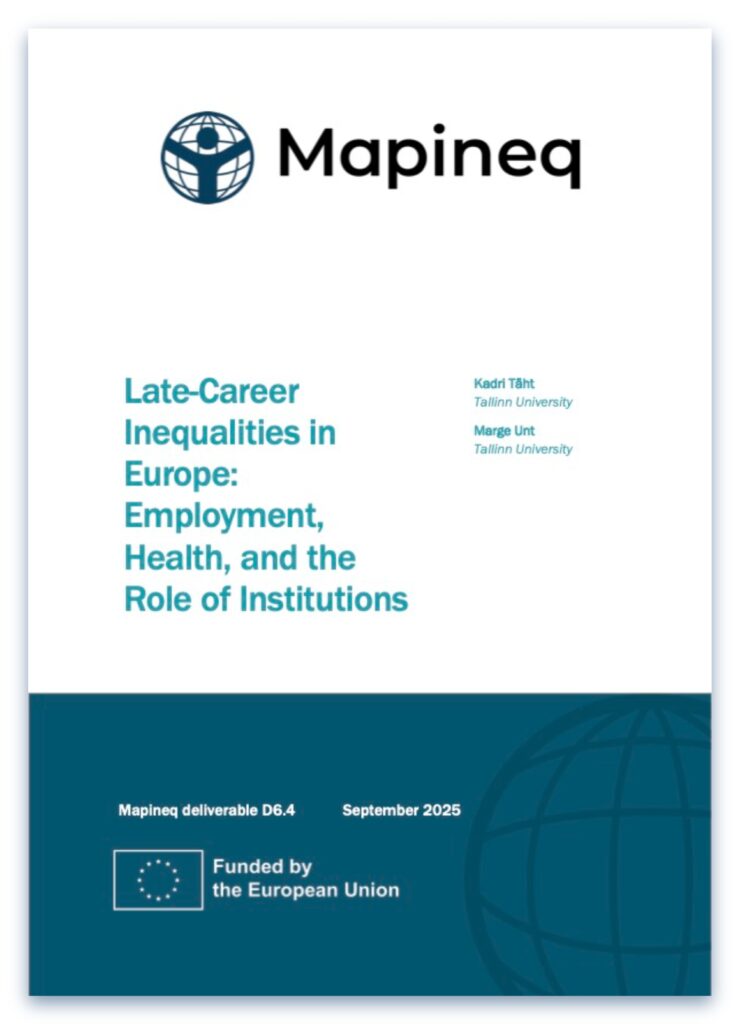Late-Career Inequalities in Europe:
Employment, Health, and the Role of Institutions
This report examines how people’s education, health, and family situations shape their chances of working longer and retiring in good conditions. It shows that pension adequacy, training opportunities, and supportive workplaces make the difference between late work as an opportunity or a necessity. Regional economic conditions also matter: strong labour demand and services help older workers stay active, while weak contexts deepen inequalities. The report calls for integrated policies that link pensions, health, and lifelong learning
By Kadri Täht & Marge Unt.

Late-career inequalities are strongly path-dependent. Education, health, and family responsibilities accumulated earlier shape who can retire with security and who faces poverty or poor health in later life.

Institutions set the boundaries of choice. Pension adequacy, adult training, and labour-market policies determine whether later retirement is an opportunity for active ageing or an obligation driven by necessity.

Regional opportunity structures are decisive. As much as 60% of the variation in late-career outcomes can be attributed to macro-level contextual factors, underscoring the need for place-sensitive, context-specific policies.

